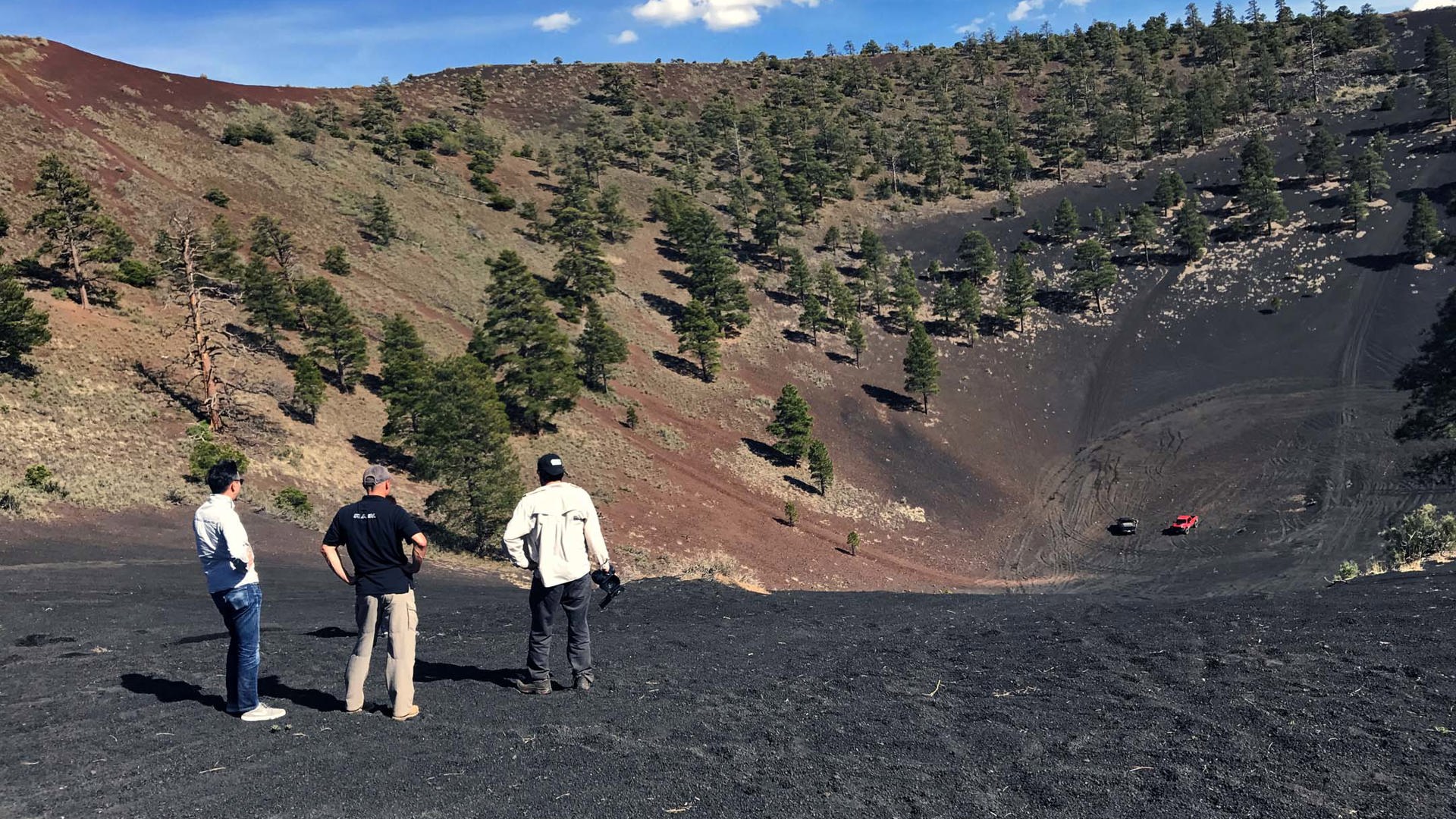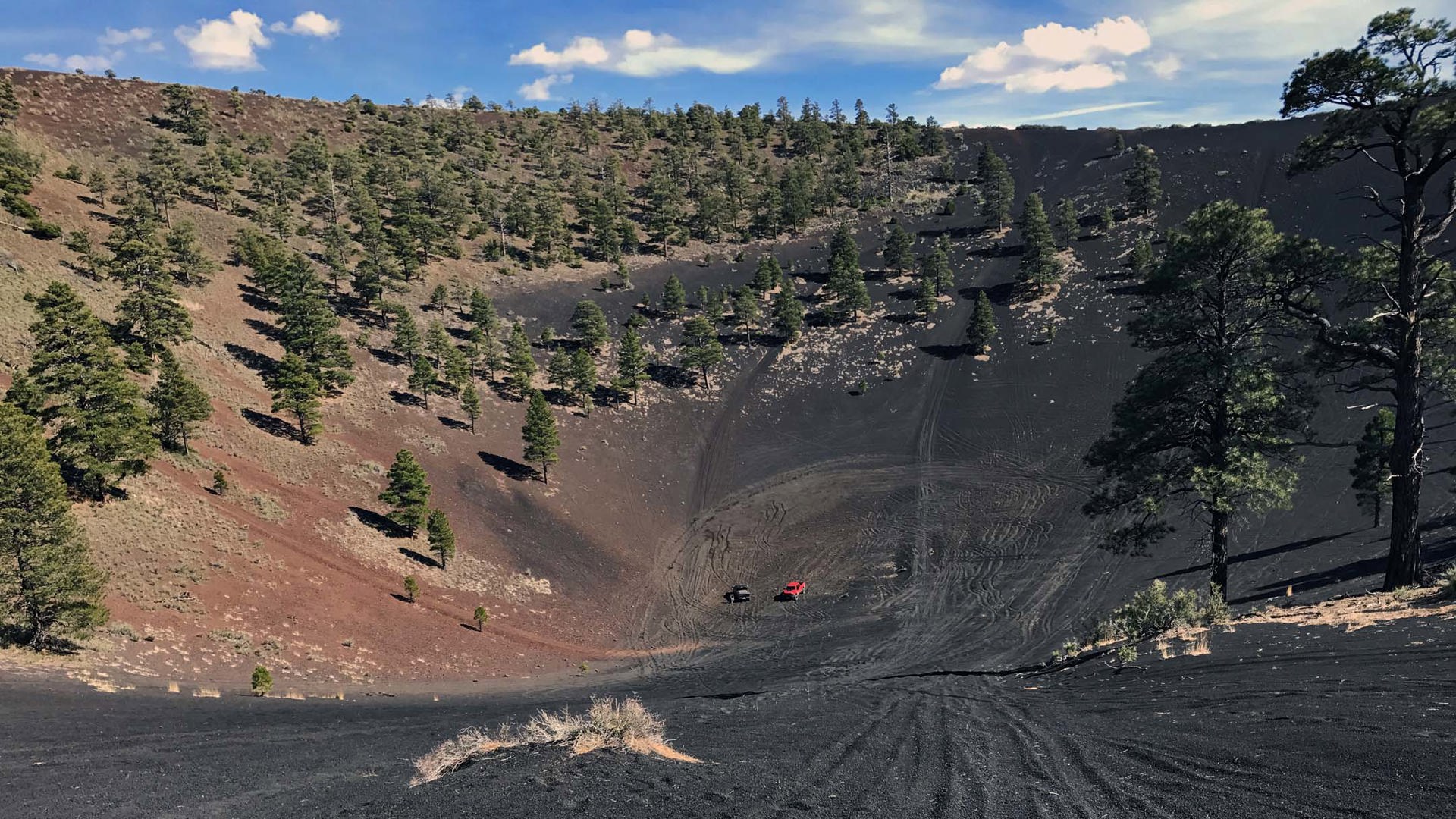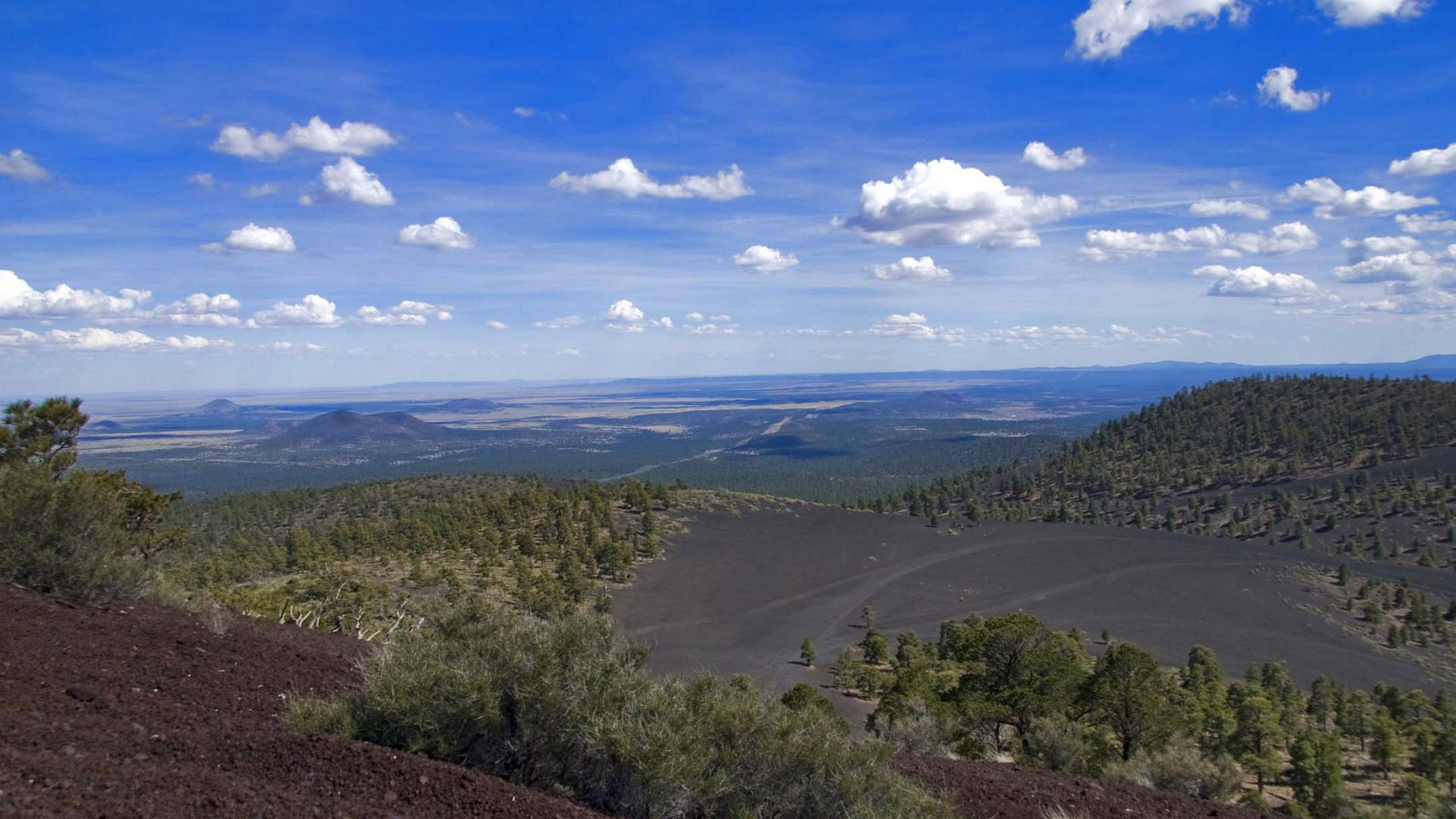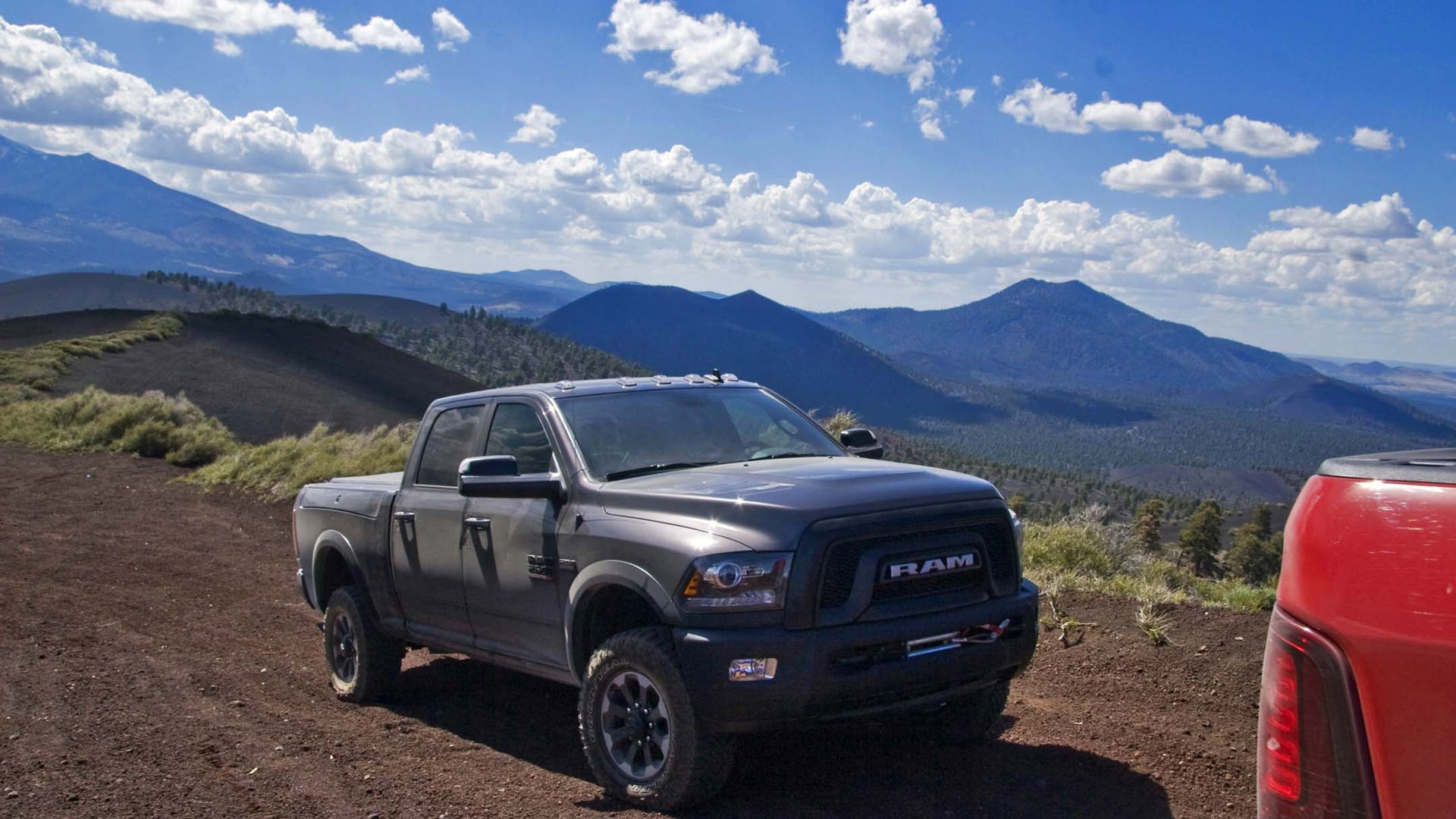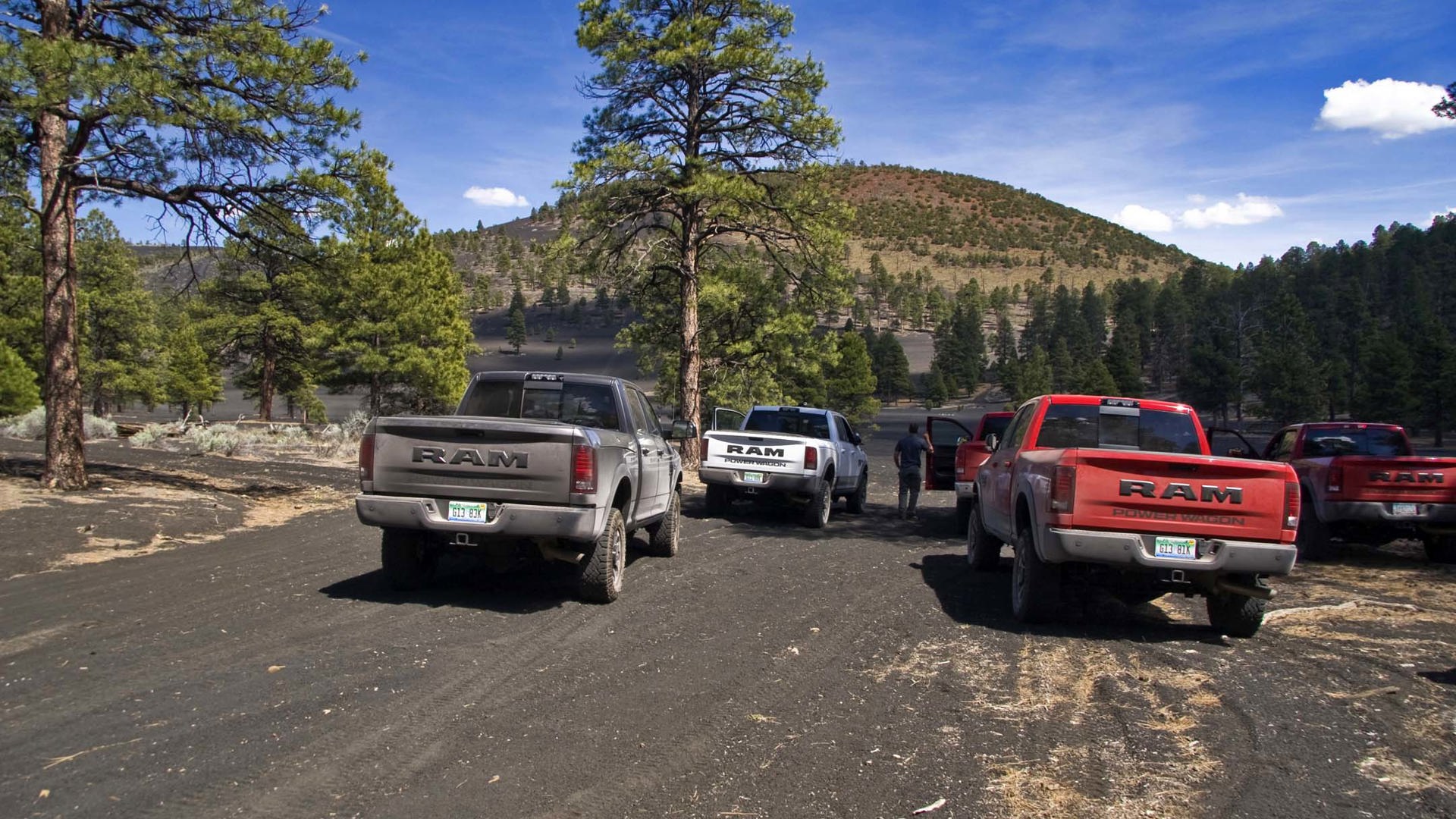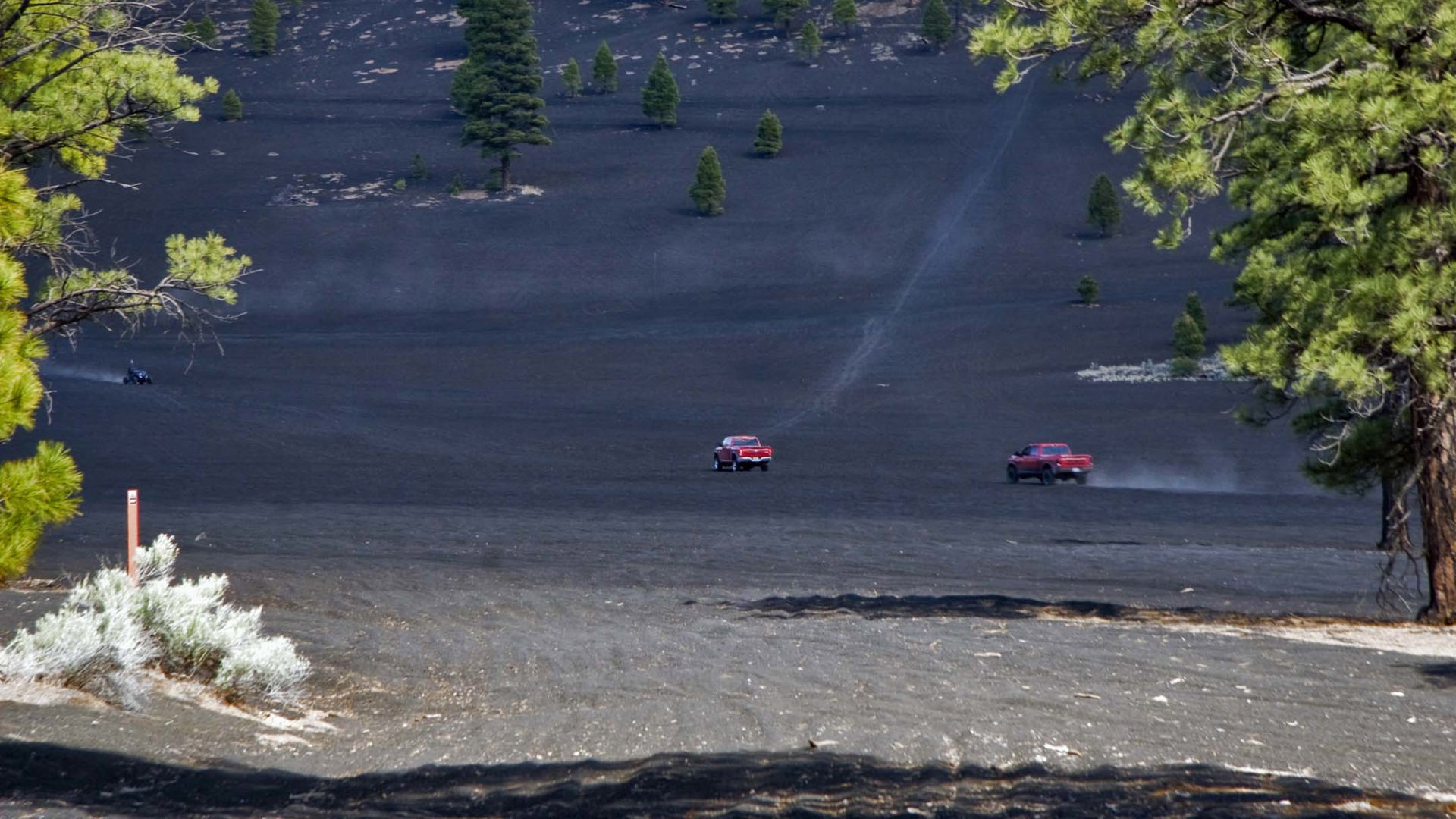Pictures by Lesley Wimbush and Joe Sage
FLAGSTAFF, Arizona – It’s been nearly fifty years since mankind first touched down upon the moon. But the landscape that greeted Neil Armstrong and Buzz Aldrin was more familiar than you might think.
Thanks to the “Astrogeology Research Program”, a joint venture between NASA and the US Geological Survey, a vast plain northeast of Flagstaff Arizona was transformed into an exact replica of the Apollo 11 landing site – right here on earth. Two thousand years ago, a volcanic eruption left 13,500 acres of Coconino Forest buried in basaltic cinders – the same material found at the lunar landing site. Using satellite photos and 30,000 lb of explosives, engineers recreated the site’s crater fields and produced a nearly perfect simulation for the astronauts in training. The Apollo program has long since faded into history, but “Cinder Hills” has become a popular recreation destination – particularly for off-roaders.

After a full day spent thrashing the Ram Power Wagon and Rebel in the Sedona desert, most of our group was content to spend the next day blissfully wandering about the “Overland Expo” an all-encompassing off-road and outdoors extravaganza held annually in Falstaff. But an off-the-cuff invitation to visit the “Cinders”, a sort of off-road rite of passage for serious 4x4 enthusiasts had piqued our interest, luring a handful of us away from the show and back into the trucks.
Our destination was Sunset Crater Volcano National Monument, a dormant volcano within Cinder Hills OHV (Off-Highway Vehicle) Park. Once we’d left US 89 for the trailhead, the forest floor gradually gave way to a vast, alien vista of ashy grey cinders. Nature had managed to reclaim some of the lunar landscape, and stands of twisted Ponderosa pine have thrust through the inhospitable surface.
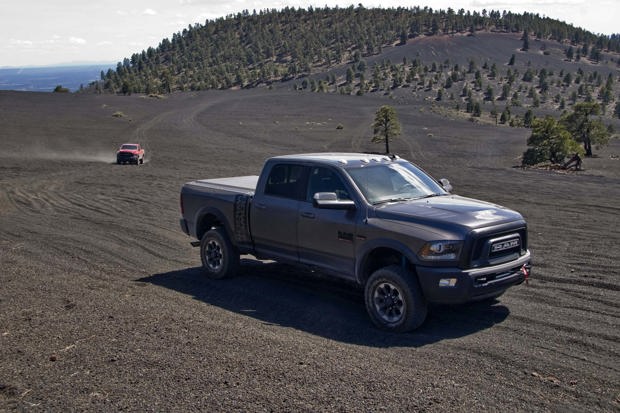
The ground undulated in wave-like swells beneath our wheels, and while it appeared as firm as a typical gravel road, the cinder layer was deceptively soft and very deep. Soon coated with dust thrown up by our churning wheels, our convoy of five scrambled across the barren, crater-pocked landscape in single file. Maintaining a steady throttle was necessary to power through the deep material without inducing a slide. I could feel the truck’s rear tires squirming for purchase beneath me as we made our way across the black dunes.
It’s an arduous slog through the deep cinders, but so far there hasn’t really been anything to challenge the Power Wagon’s off-road prowess. We had dropped our tire pressure to 46 psi from 65 so they wouldn’t spin uselessly in the pea-gravel-sized substrate, but hadn’t yet found it necessary to engage 4LO, nor lock the differentials. The Power Wagon’s possessed of the brute strength of the regular full-size Ram pickup, but the difference lies in its suspension components. Underneath its macho exterior is an arsenal of such off-road equipment as Bilstein mono-tube shocks, five-link coil rear suspension, electronic disconnecting sway bar, electric locking front and rear differentials, full underbody armour and 33-inch Goodyear off-road tires. Up front is a 12,000 lb Warn winch, in the unlikely event that you put it somewhere it’s unable to extricate itself from, or more likely, needs to haul somebody else out of. With 363 mm (14.3 inches) of clearance, 660 mm (26 inches) of wheel travel, 762 mm (30 inches) of water fording, 26 inches of wheel-travel articulation, an approach angle of 34.0 degrees, departure 23.5 and break-over angle of 25.5 degrees – the Power Wagon’s well-equipped to tackle just about anything.

Ploughing through Cinder Lake, a barren grey field of volcanic fallout, we stopped to further lower our tire pressure to 35 psi and engage 4LO before blasting up the steep slope leading to the first of the now-extinct cones. It’s been exhilarating and the view along the ridge we’re straddling is spectacular, but thus far our route hasn’t really been intimidating. Having survived the violently rugged arroyos and Volkswagen-sized boulders of Fire Valley, Nevada, in this truck, I felt fairly confident in our invincibility.
That was before I saw Sunset Crater. As the youngest of the San Francisco Peaks string of volcanoes, Sunset is considered dormant rather than extinct – which makes the jutting black peak only seem more ominous. Although its flanks still bear years-old scars from previous off-road excursions, Sunset Crater is now protected due to its archaeological significance, and its status as a sacred tradition site for the Hopi, Navajo, and Apache peoples. Continuing along the crest, the sense of relief I secretly felt was short-lived when we suddenly came upon Pinnacle Crater – an enormous, seemingly bottomless pit. Stunned with disbelief, I watched our lead truck drop off the edge and out of sight. Nothing but the fear of personal and professional humiliation would have persuaded me to venture any closer to the rim of that crater, so holding my breath, over I went.

Dust and cinders billowing behind, we slid down what felt like an avalanche of frozen peas. It was the veritable black hole of topography from which the only view was the blue sky far overhead. Any attempt to scale those daunting cinder walls regardless of how ferociously we attacked them, ended with an agonizing halt, bogged down in the substrate less than three-quarters of the way up.
Our guide, the indomitable Nena Barlow, owner of two Jeep Expedition companies and a 24-year veteran of the trails, demonstrated the only way out. Spiralling upward in a beautifully controlled drift, a giant plume of dust in her wake, she gained enough centrifugal force to slingshot upward and continued on over the rim. Sound easy? It wasn’t. The counter-steer angle had to be exact, or the truck would either bog, or worse, slide sideways down – and watching the ground rushing up toward the passenger window is rather disconcerting.
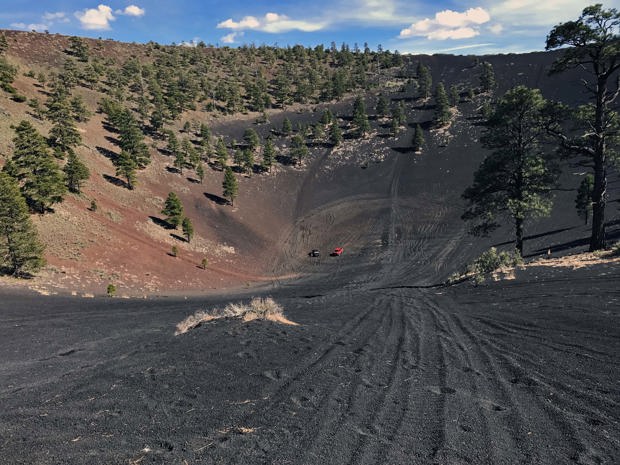
After several failed attempts, vocabulary of multi-syllable adjectives exhausted, I dropped the tire pressure to 20 psi. Circling the slope faster and faster until I’d gained enough momentum to break loose, I flew up the wall of the volcano, holding my breath until I’d breached the edge and had all four tires on solid ground.
I was relieved when we pointed the Ram’s noses back towards the Arizona desert. Its striated cliffs and enormous boulders seemed welcoming after the eerie lunar setting; and were only minutes instead of light-years away.





